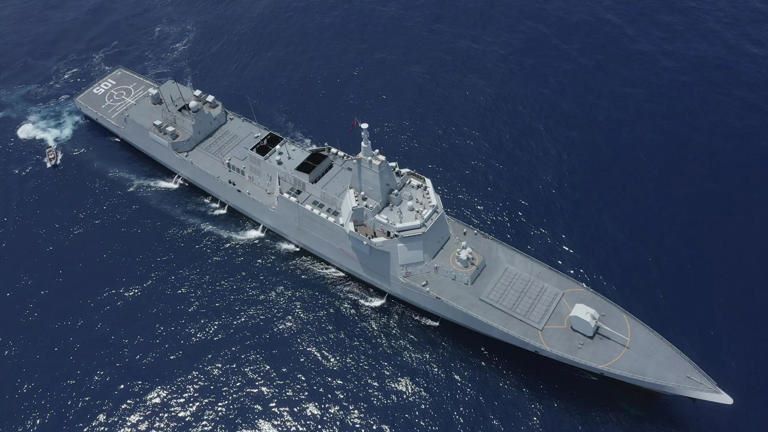• 1d •
The US faces pressure to modernise and respond to China’s rapidly advancing military capabilities and ambitions, top Pentagon figures said, vowing to hasten the integration of manned and unstaffed systems to overcome a “readiness crisis” decades in the making.
Senior officials from America’s navy, marine corps, air force, space force and coastguard argued the US needed quickly to adapt and innovate amid the People’s Liberation Army’s growth, particularly given a relative shortfall in shipbuilding and other areas.
Do you have questions about the biggest topics and trends from around the world? Get the answers with SCMP Knowledge, our new platform of curated content with explainers, FAQs, analyses and infographics brought to you by our award-winning team.
“Will they fight? I don’t want to find out. But they’ve got a leader who has an ambition,” he added, referring to Chinese President Xi Jinping. “That’s something we need to take very seriously.”
The US military saw China as “heavily funding” its military capabilities, Allvin said, with Washington eager to reach a point at which Beijing would not think of going “up against any of us”.
“Time matters,” said Admiral James Kilby, the US Navy’s acting chief of naval operations, at the event. “That’s a variable we typically don’t think about and should think about with China. So, 2027. Time matters. Contracting matters.”
Beijing sees Taiwan as part of China to be reunited by force if necessary. Most countries, including the US, do not recognise Taiwan as an independent state, but Washington is opposed to any attempt to take the island by force and is committed to arming it.
Kilby acknowledged serious concerns about American shipbuilding capacity compared with that of China and urged the expansion of unstaffed systems to compensate.
“I have no doubt about the quality of our ships, and no doubt about the way we employ them and train them,” he explained. “But … quantity, that is a concern for me.”
Delays were widespread across nearly every class of US warships, according to Kilby, who called for accelerated investment in unstaffed surface and undersea vehicles to supplement traditional fleets.
The US military was looking to transition to “a hybrid fleet”, Kilby continued, referring to a mix of traditional and unstaffed fleets as well as undersea, surface and air vehicles. He said such a composition was in use in Ukraine and that “there’s great value there”.
At present, China has the world’s largest navy by number of vessels and stands at more than 200 times the shipbuilding capacity of America, according to US Navy estimates. The disparity has raised alarm at the Pentagon over its ability to keep pace with China.
General Eric Smith, commandant of the US Marine Corps, said at the event on Monday that his branch was prioritising unstaffed sensors and long-range precision fires, such as drones, that could strike from a distance rather than legacy artillery.
Smith believed future armed conflict would “be about range and about detection”, saying: “It’s a higher finder game and the advantage goes to … who can find the adversary.”
This was the reason the US Marine Corps “invested so heavily in sensors like our big-wing drones or MQ-9”, he added. “When I can sense and make sense of what’s going on, I can deter it before it grows, or I can strike it before it can strike me.”
The MQ-9 Reaper is a long-endurance, remotely piloted drone equipped with advanced sensors and precision-strike capabilities used for targeting attacks at extended ranges.
China has rapidly expanded its own military drone programmes, fielding systems like the Wing Loong and Chang Hong-series drones that resemble American platforms in design. They have been widely exported and combat-proven.
The US Air Force, meanwhile, is abandoning its legacy model of building isolated systems in favour of focusing on lethality and capabilities with human-machine integration.
Allvin, the US Air Force chief of staff, described the plan as looking beyond merely China. “We’re thinking about building the force for the changing character of war,” he said, with a premium placed on “speed and agility and tempo and pace”.
“We need more diversity in the platforms, more human-machine teaming,” Allvin added. “Unlocking the potential of the human machine team to be able to advance our capabilities is something we’re really leaning into.”
In orbit, the US Space Force is coming to terms with a PLA that has developed defences to “deny” America’s ability to use extraterrestrial systems, according to General B. Chance Saltzman, the force’s chief of operations.

